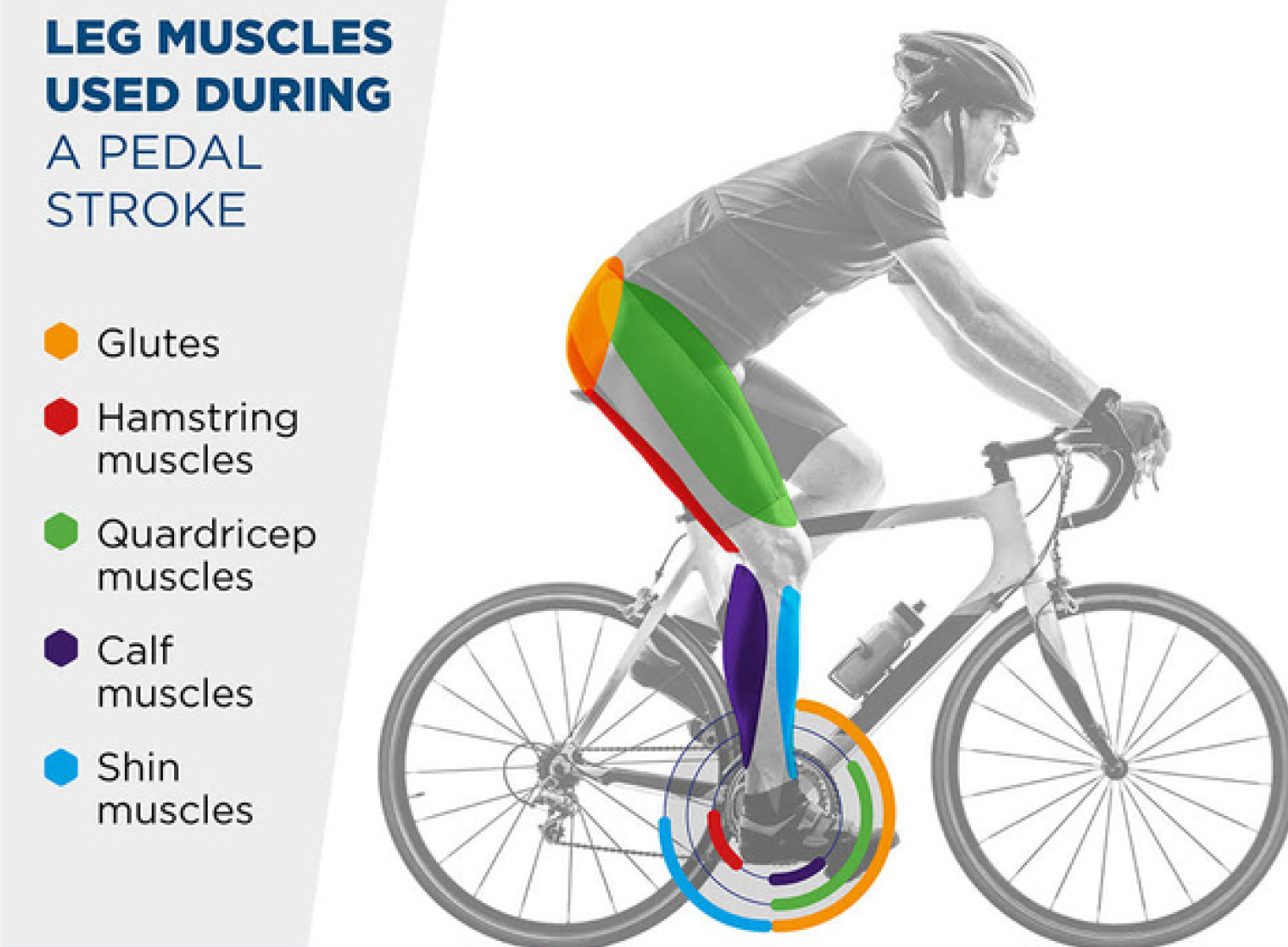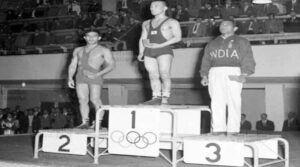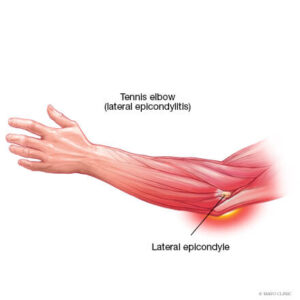Cycling is unique due to the combination of extreme postural inertia of the upper and lower body together with excessive repetitious load on the lower limbs. The aim of biomechanics applied to cycling is to improve the cyclist’s interaction with the bicycle, with the aim of ensuring the comfort of the position (posture) and the efficiency (of pedaling).
There are two main phases of the pedal cycle:
1. Power phase :
- From 12 o’clock till 6, phase where all the force is generally generated to propel the bike forward. From the top of the pedal stroke, a cyclist utilizes their hip extensors (gluteus maximus muscle) which initiates the Power Phase of the pedal stroke until point at 3 on a clock face.
- From the point of 3 to 5 on the clock face the knee extensors activate: Vastus lateralis and vastus medialis. Many cyclists associate this point with generating the most force for their pedal stroke; this is particularly prominent while climbing out of the saddle on steep gradients.
- From positions 5 to 6, plantar flexion occurs, thanks to the gastrocnemius which causes the toes to point outwards. The gastrocnemius and soleus’s main role is to stabilize the lower leg to enable an efficient transition of the force generated by the upper leg to the pedal.
2. Recovery phase :
- From 6 back to 12 o’clock. The transition from 6 o’clock back up to 12 o’clock is known as the Recovery Phase. Now not all of the muscles just switch of during this phase, it just is not as active as the Power Phase.
- From 6 to 8, the Tibialis Anterior draws the toe upwards towards the shin. (Dorsiflexion)
- From 8 to 10, hamstrings (Semimembranosus, Semitendinosus and Biceps (Femoris) pull the heel upwards towards the buttocks.
- From 10 to 12, the hip flexors of the Iliacus and Psoas finish off the pedal stroke.
BIKE SET-UP AND POSITIONING
A good bicycle fit goes a long way to prevent overuse injuries and helps muscles and lungs function at best ability, all improving performance and enjoyment.
1. Foot position
When placing your foot on a flat pedal, the ball of your foot should be just inront of the pedal spindle ie the spindle of the pedal should support the back section of the meaty part of the ball of your foot allowing the rider to stay balanced when standing on the pedals.
2. Saddle height
A very important part of bike fit is the saddle height. A simple way to get your basic seat height is by having your heels over the pedal spindles, your heels should stay in contact with the pedals throughout an entire backpedal stroke. If you lose contact with the pedals, or have to rock your hips to maintain contact, your saddle is too high. Then with foot in cycling position your knee should have a slight bend at the bottom of the pedal stroke. This keeps your knee joint stable and protected.
3. Stem
Some people prefer a more upright position eg. those with back issues, or flexibility issues. This can be addressed by adding a spacer to the stem to bring the handlebars up higher.
4. Handlebar position
A bike fit is about fitting to you so the below guideline are loose to allow for individual anatomical variations. The handlebars should be in a comfortable lean forward position that doesn’t strain your back, neck, shoulders or wrists.
5. Bar reach and drop
With good positioning, the set-up allows the cyclist to attain an anteriorly tilted pelvis, a flat unkinked back, retracted scapulae, unlocked elbows and relaxed upper limb.






Nice Information…